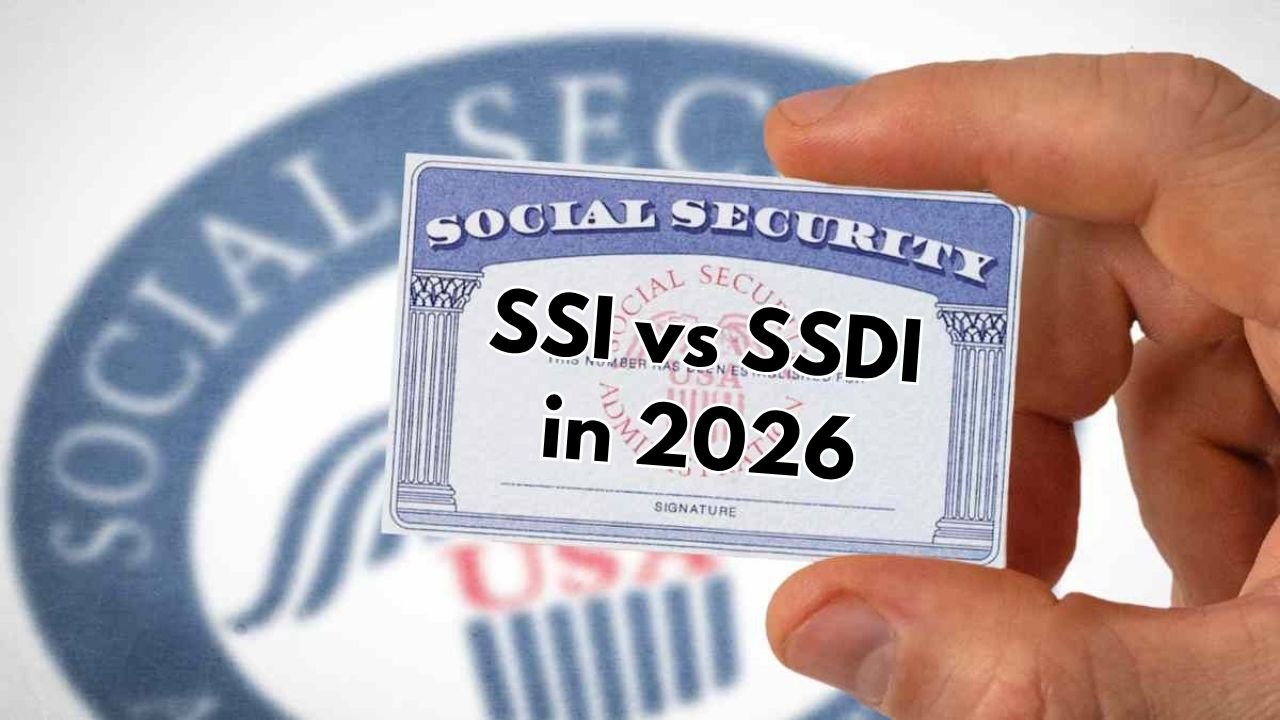Many Americans rely upon Social Security incapacity benefits to cover primary wishes once they’re unable to work due to a critical medical circumstance. In 2026, the 2 primary federal applications that offer this form of guide Supplemental Security Income (SSI) and Social Security Disability Insurance (SSDI) will remain critical lifelines for millions. While both are controlled via the Social Security Administration (SSA), they serve special groups and have distinct policies.
If you’re burdened approximately which application you qualify for, how lots you might receive, or how your work history impacts your benefits, information the important thing differences between SSI and SSDI is important.
What Is SSDI?
Social Security Disability Insurance (SSDI) is for employees who have paid into Social Security through payroll taxes and are now not able to paintings because of a qualifying disability. Your eligibility is based totally for your work history and the amount of “work credit” you’ve earned.
To qualify for SSDI in 2026, you must:
- Have a disabling condition that forestalls you from working for as a minimum 12 months or is predicted to bring about dying.
- Have earned sufficient work credits (usually 40 credit, or 10 years of work).
- Be under full retirement age.
The SSDI application is not income-based, so that you can have property and profits (outdoor of labor) without being disqualified.
What Is SSI?
Supplemental Security Income (SSI) is a wishes-based program for folks that are aged, blind, or disabled and feature very confined profits and property. It isn’t always tied in your work history.
To qualify for SSI in 2026, you must:
- Be age 65 or older, blind, or disabled (equal clinical criteria as SSDI).
- Have constrained profits (usually underneath $943/month for people or $1,415/month for couples).
- Have resources under $2,000 for people or $3,000 for couples (including cash, bank accounts, or stocks—now not your property or car).
Unlike SSDI, SSI is funded with the aid of standard tax revenues, no longer Social Security taxes.
Payment Amounts for 2026
SSI and SSDI pay one-of-a-kind benefit amounts, and every is affected by other income or benefits you receive.
SSI Payment Estimates for 2026:
| Status | Monthly Payment (Est.) |
|---|---|
| Individual | $943 |
| Couple | $1,415 |
These are federal base amounts. Some states offer supplemental payments that increase the total amount.

SSDI Payment Estimates for 2026:
| Situation | Average Monthly Benefit |
|---|---|
| Disabled Worker (avg.) | $1,535 |
| Disabled Worker with Spouse & Child | $2,720 |
| Maximum Possible Benefit | Over $3,800 |
SSDI payments range greatly relying to your past income and contributions to Social Security. The greater you earned even as running, the better your SSDI benefit.
Key Differences Between SSI and SSDI
| Feature | SSDI | SSI |
|---|---|---|
| Based on Work? | Yes, requires work history | No, based on financial need |
| Funded by? | Social Security payroll tax | Federal income tax |
| Age Requirement | Under full retirement age | Age 65+ or disabled |
| Income/Asset Limits | No strict limits | Strict income and asset caps |
| Health Insurance | Eligible for Medicare | Eligible for Medicaid |
| Benefit Amount | Varies by work history | Fixed federal base rate |
Application and Approval Process
Both programs require medical evidence of disability, however the strategies vary barely:
- SSI: Focuses on economic need and clinical eligibility. Applicants may additionally want to provide bank statements, evidence of income, and asset statistics.
- SSDI: Focuses on earlier work history, medical documentation, and Social Security contributions. SSDI applicants should meet strict disability definitions used by SSA.
Both programs regularly experience backlogs, making it essential to use early and gather all essential documentation to avoid delays.
Conclusion
In 2026, SSI and SSDI will continue serving wonderful roles inside the Social Security landscape — one a needs-based totally protection net, the other a incapacity coverage benefit tied to work history. Understanding their eligibility policies, earnings and aid limits, benefit calculations, and scheduled changes is essential for absolutely everyone counting on or planning to apply for incapacity or help benefits.
While SSDI offers better benefits to people with strong paintings histories, SSI ensures a baseline income for people with limited sources. If you qualify for each, “concurrent” benefits may also help you maximize guide. To put together, stay informed about COLA adjustments, rising thresholds, and new guidelines affecting eligibility — specifically with adjustments coming in 2026.
FAQ’s
What occurs to SSDI once I reach retirement age?
Your SSDI automatically converts to regular Social Security retirement benefits, and the payment amount remains the identical. You won’t lose benefits.
Can I work while receiving SSDI or SSI?
Yes, however there are strict profits limits. SSDI recipients can use the Trial Work Period, at the same time as SSI recipients can only earn up to a sure amount earlier than benefits are reduced or stopped.
Do I need to reapply every year?
No. However, the SSA will conduct periodic Continuing Disability Reviews (CDRs) to ensure you continue to meet the medical necessities. SSI recipients must also file any adjustments in earnings or property.
Can I get hold of again pay from SSDI or SSI?
Yes. If approved, you could obtain retroactive payments courting back for your application date or incapacity onset. SSDI back pay can cover up to 12 months prior to your application.
